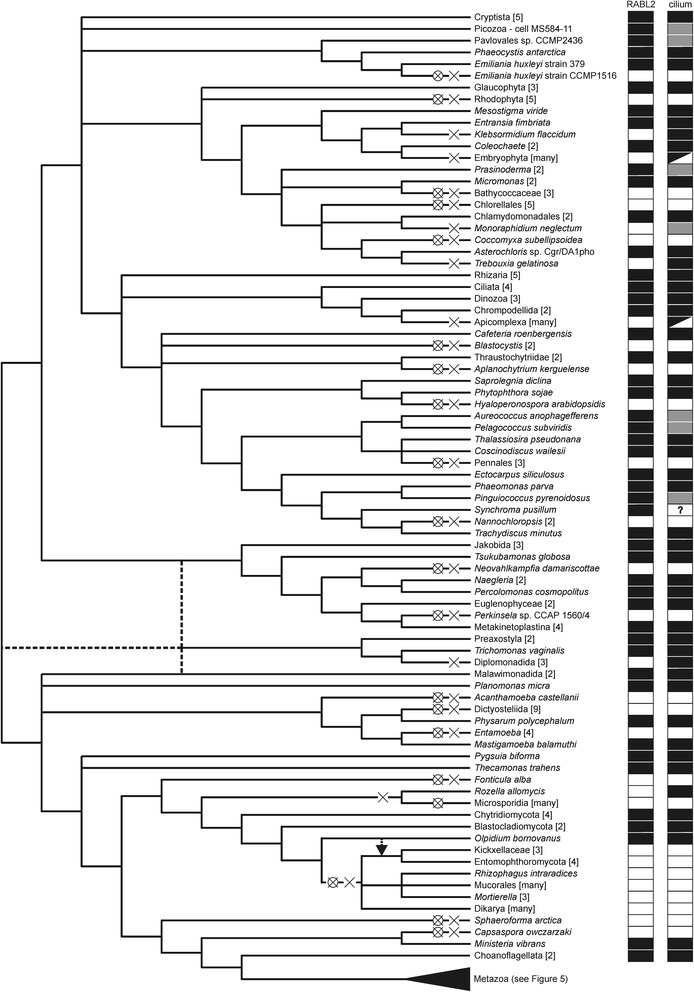Fig. 4.

A fine-scale map of the phylogenetic distribution and losses of RABL2 genes in eukaryotes. The dendrogram indicating the relationships among the taxa was drawn with the same rationale as the one on Fig. 3. For each taxon the presence/absence of a RABL2 ortholog and of a cilium is indicated on the right (evidence for the presence of absence of a cilium for the different taxa is based an extensive literature survey complemented for some taxa with checking the presence of homologs of cilium-specific genes in their genome or transcriptome sequences). Well established (named) clades, where all species analyzed either possessed or lacked a RABL2 ortholog, were collapsed and displayed as a single terminal branch. The metazoan clade, which includes both RABL2-possessing and RABL2-lacking species, was also collapsed and is shown in detail in a separate scheme (Fig. 5). The number of the species representing the clade in our sample (see Additional file 1: Table S1 for their identity) is indicated in square brackets. The meaning of the symbols used for indicating the distribution and loss of RABL2 and the cilium is explained in Fig. 5. The position of the fungus Olpidium bornovanus is shown sister to all traditionally defined Eumycota (paraphyletic “Zygomycota” plus Dikarya) to conservatively indicate only a single unique loss of RABL2 in this group, but the dashed lines indicate that Olpidium may be specifically related to some “zygomycetes”, which would increase the number of RABL2 losses in Fungi (see main text for details)
